How to Choose the Right Hair Extensions
Who wants longer and thicker hair? Maybe you’re after one of those, maybe you’re after both. Either way, you’re in luck! Hair extensions have taken off everywhere as a solution for those wanting to fake what they weren’t blessed with naturally. In fact, they are so commonly used these days that sometimes those without extensions get the question: “Is that all your real hair?” Either way, if they’re unsure enough to have to ask, you’re doing something right! But where do you start? What type of extensions are the right ones for you? What’s the difference? What is it gonna cost me? How long will they last, and what if I get sick of them? Well, I have broken down the answers for you below. As someone who totally endorses extensions as a temporary solution to feel great about your own hair, I can tell you I get asked about them a LOT. I love it, it means people are interested in new trends, and I love to share what I know about the industry I love so much. So take a peek, and see what the best option is for you, even if you’ve never even thought about extensions.
Bonded Extensions:
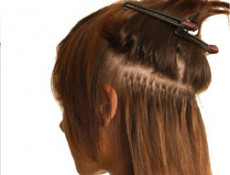
My personal favorite, and yes I am biased because I am certified to do them. Believe me when I say that if you are going to have someone put extensions in your hair, you want to make sure they are certified to offer the service or your hair pays the price. These are what you see on the red carpet—Paris Hilton made us all aware of this type of extension when she went from a bob to super long length in a matter of days. No, it wasn’t some fabulous shampoo…it was extensions. These are fused to your own natural hair with a heat-activated keratin bond. Keratin is, as a reminder, what your hair, skin, and nails are made of. They last up to 5 months with proper care and will cost $1000+. This is the most natural and also most permanent way to wear extensions.
Clip-On Extensions:
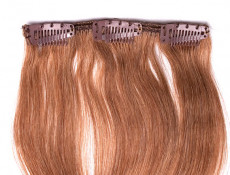
This one is a little bit self-explanatory by its name. Clips are attached at the root and are a great short-term (1 day) option. Never, never, NEVER sleep with these in, they will rub against your scalp and not only cause discomfort, but also can create bald spots. This is the most easily accessible type of extension, and pricing can vary from $30-$1500 depending on whether the hair is human or synthetic. Side note: You cannot color or apply heat to synthetic hair, period. It will melt on contact, and not respond to any coloring.
Glue-in Extensions:
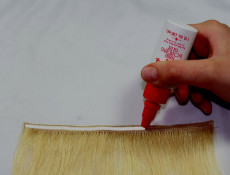
Wefts of hair are glued to the hair closest to the scalp, without actually applying glue to the scalp with “hair glue”. They are also very temporary, because once you wash them; they will start to loosen and can also start to cause an itchy scalp. The glue is removed with oils and should only be applied and removed by a professional. You thought getting a small piece of gum in your hair was painful? Think about a whole head of glue! Proceed with caution. Cost: $150-$500.
Sew-in Extensions:
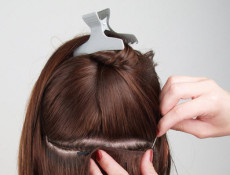
Stylists will cornrow sections of the hair, than literally sew the wefts of hair into the cornrows. The process is time consuming, but the results can last 6-8 weeks. This is ideal for ethnic hair types, as it is less prone to breakage as cornrows are usually very tight and pull on the hair/scalp. Cost: up to $1000.
Tape-in Extensions:
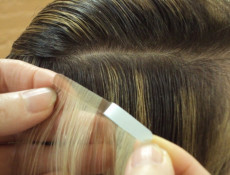
This is a growing trend and is a softer option than glue-in extensions. They are taped to the natural hair closest to the scalp and can last up to 6 weeks. Removal is key: as they can rip out your real hair if removed carelessly. Oil based products are used and should also only be done by a professional. Cost: about $650.
Did you find one that sounds like the right option for you? Or are you still unsure of what is best for your hair type/density? Let’s get some definitions for you.
Human hair: more costly than synthetic but can be cut/colored/styled just like your real hair. Believe me when I say it is worth the extra bucks!
Remy Hair: Highest quality of human hair available, and is the most natural looking. The cuticles of each strand are attached so they all lay down, and in the same direction.
Synthetic Hair: Cheaper, less frizz, and retains shape. Can look unnaturally shiny and will melt if heat is applied.
Tracks: Parts, sections, or cornrows that extensions are attached to.
Weave: Extensions that are sewn into hair.
Weft: A strip of hair that can be applied with glue, tape, clips, or sewn in.
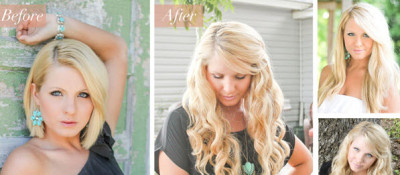
Photo courtesy of www.luxyhair.com
Extensions are available in more options than ever before, and can be used to fulfill a variety of needs. Maybe you want to add a pop of Pink without the commitment or damage to your natural hair. Extensions are a great solution and when you’re sick of the color just remove them. There’s nothing that says you have to apply extensions to your entire head. More and more people are using extensions for this way to change their look. They are now even available as bangs or ponytails, and will always come with proper instructions on how to wear them so it looks like your real hair.
If you want to fool everyone with your new hair additions, color matching is KEY! As you can see, extensions can be very costly, so making sure you purchase them in the right shade and tone is essential. Ask your stylist for help, it’s what we are trained to do! Even if they don’t offer extensions as a service, they can certainly match them to your natural hair for you very quickly! Exercise caution when cruising the Internet for extensions, pictures can be deceiving and unfortunately are sometimes not even photos of the actual product. Any company selling hair will likely have a ‘Final Sale’ policy to go along with it. So be sure you do your research, or ask around. Have fun, play with your options. It doesn’t have to be permanent, but it’s a fantastic way to make a change or strut your stuff!! Happy hair hunting!!
Thank for your sharing, That’s exactly what I was looking for
Clip on hair ext. I have 12 Remy clip on hair ext. Was was wondering if your school put them in
Thank you rose